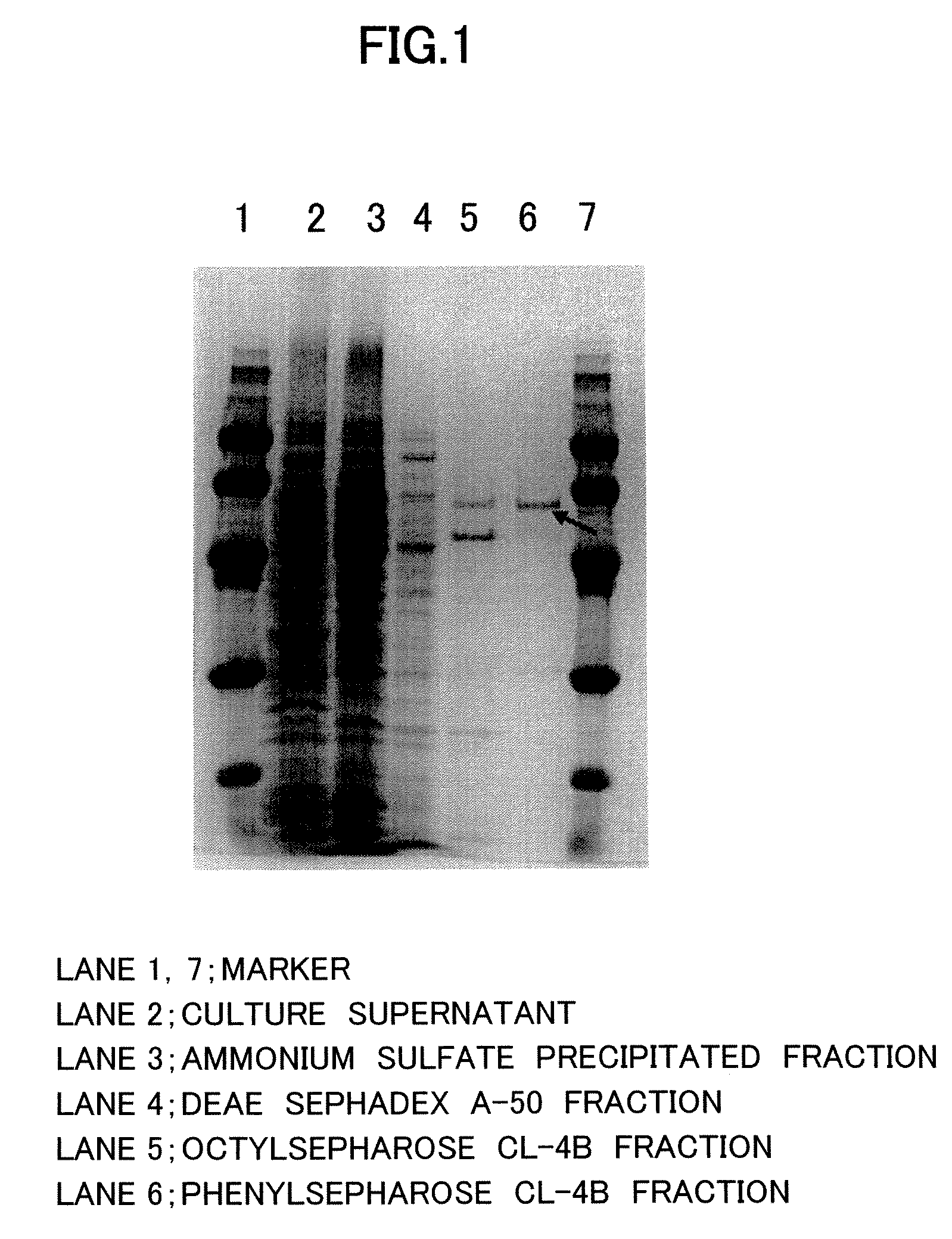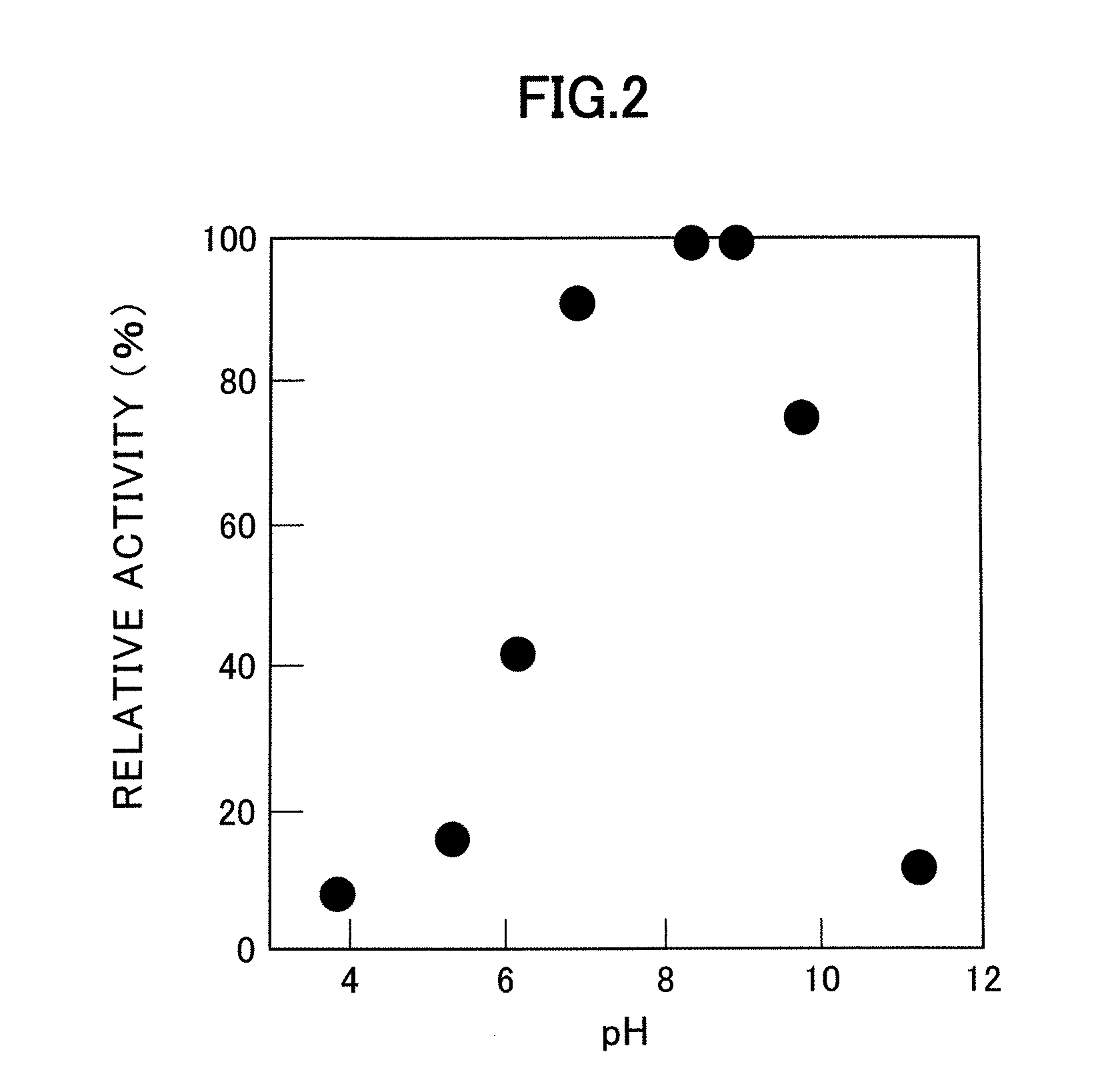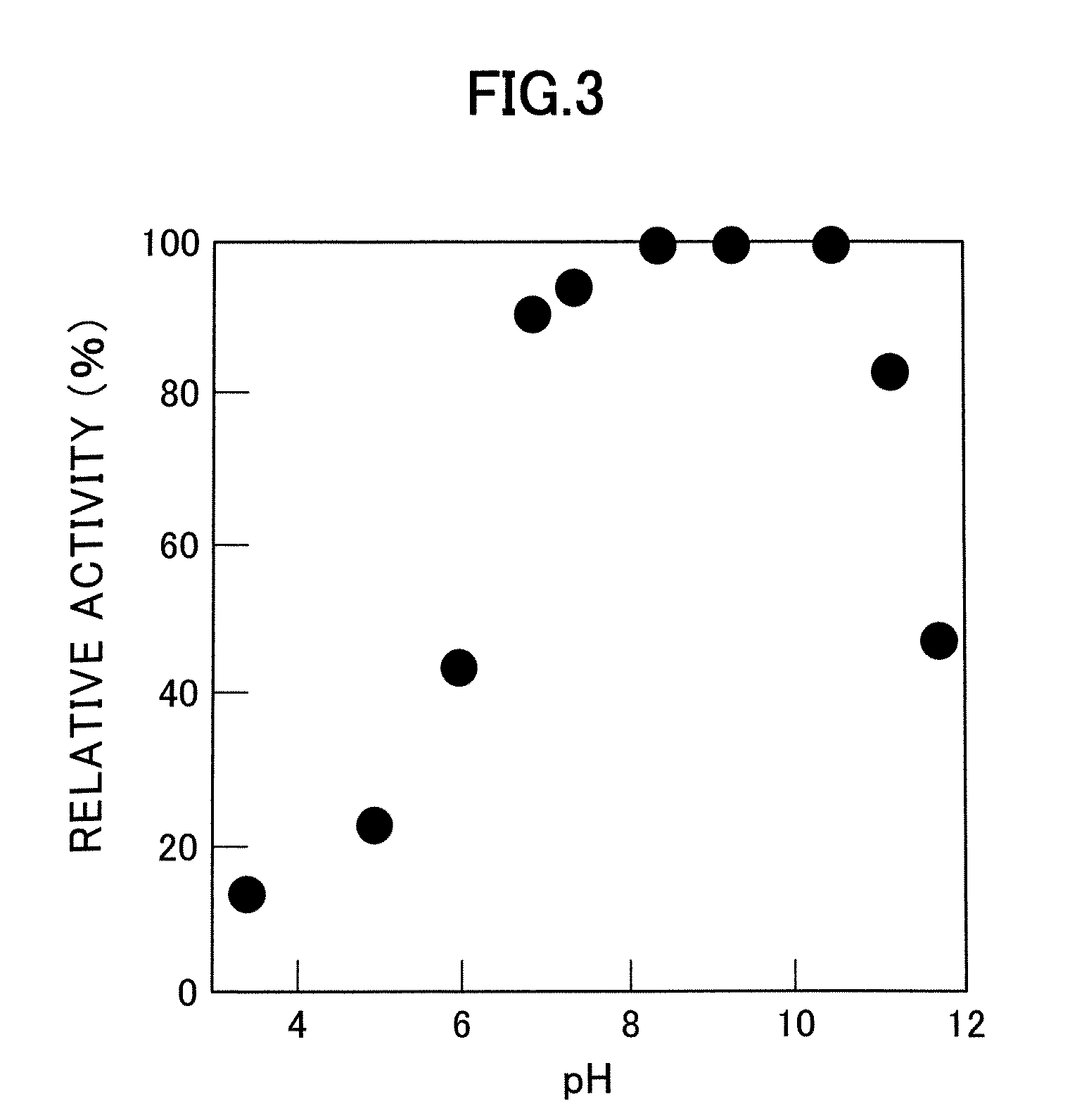Nε-acyl-L-lysine-specific aminoacylase
a technology of aminoacylase and acyl-l-lysine, which is applied in the field of nacylllysine-specific degrading and synthesizing enzymes, can solve the problems of large quantities of hydrogen sulfide gas, complex manufacturing steps and operations, and no enzyme that specifically and efficiently acylates the -amino group of the two amino groups in lysine, etc., and achieves enhanced activity and enhanced activity.
- Summary
- Abstract
- Description
- Claims
- Application Information
AI Technical Summary
Benefits of technology
Problems solved by technology
Method used
Image
Examples
example 1
Production and Purification of Aminoacylase of Present Invention
[0048]Two (2) liters of medium containing 4.0% soluble starch, 2.0% polypeptone, 4.0% meat extract, 0.2% potassium hydrogen phosphate and 2.0% magnesium sulfate at pH 7 was placed in a 5-liter baffled Sakaguchi (shaking) flask and inoculated with 0.1 ml of Streptomyces mobaraensis spore suspension, which was then cultured for 3 to 7 days at 30° C. A total of 2 liters were cultured, and upon completion of culture the cells were removed by centrifugation (10,000×g, 30 min) and the supernatant was collected. The total activity of the resulting enzyme (in supernatant) was 2875 U, and the specific activity was 0.096 U / mg. Quantification of the proteins was conducted by dye binding method.
[0049]The activity of the enzyme of the present invention was measured by incubating the enzyme (50 mM Tris-HCl buffer, pH 8.0) for 30 minutes at 37° C. with a defined concentration of Nε-acetyl-L-lysine as the substrate, and assaying the re...
example 2
Optimum pH and pH Stability of the Aminoacylase of the Present Invention
[0057]The optimum pH and pH stability of the enzyme were measured using the finally purified enzyme obtained by the methods described in Example 1 and Nε-acyl-L-lysine as the substrate.
[0058]Activity was measured at 37° C. at different pH values using different buffers (pH 3.8 to 9.7: Tris-HCl buffer; pH 8.6 to 10.6: CAPS buffer). The results are shown in FIG. 2. In FIG. 2, activity is presented as a relative activity (%) given 100 as activity at the maximum value. As shown by these results, the optimum pH for the enzyme is in the range of 8.0 to 9.0.
[0059]pH stability was also investigated. When incubated for 1 hour at 37° C., the enzyme of the present invention was stable at a pH range of 6.5 to 10.5 (FIG. 3).
[0060]The optimum reaction temperature and temperature stability of the enzyme were also measured using the aforementioned purified enzyme, with Nε-acyl-L-lysine as the substrate. The results are shown in...
example 3
Effect of Various Inhibitors on the Hydrolyzing Activity of the Aminoacylase of the Present Invention
[0064]The effects of various inhibitors on hydrolysis activity were compared by the measurement methods described above using a purified enzyme obtained as in Example 2. One example of the results is shown in Table 2. In Table 2, the enzyme activity is presented as a relative value (%) given 100 as hydrolysis activity where nothing was added. These results showed that the enzyme of the present invention was a metal enzyme the activity of which was reduced by 0-phenanthroline.
[0065]
TABLE 2AddedRelativeconcentration (mM)activity (%)Nothing added—100PCMB186.1Iodoacetamide183.1β-mercaptoethanol1087.5DTT164.7GSH180.0L-cysteine177.6EDTA174.60-phenanthroline110.3
PUM
| Property | Measurement | Unit |
|---|---|---|
| pH | aaaaa | aaaaa |
| pH | aaaaa | aaaaa |
| temperature | aaaaa | aaaaa |
Abstract
Description
Claims
Application Information
 Login to View More
Login to View More - R&D
- Intellectual Property
- Life Sciences
- Materials
- Tech Scout
- Unparalleled Data Quality
- Higher Quality Content
- 60% Fewer Hallucinations
Browse by: Latest US Patents, China's latest patents, Technical Efficacy Thesaurus, Application Domain, Technology Topic, Popular Technical Reports.
© 2025 PatSnap. All rights reserved.Legal|Privacy policy|Modern Slavery Act Transparency Statement|Sitemap|About US| Contact US: help@patsnap.com



